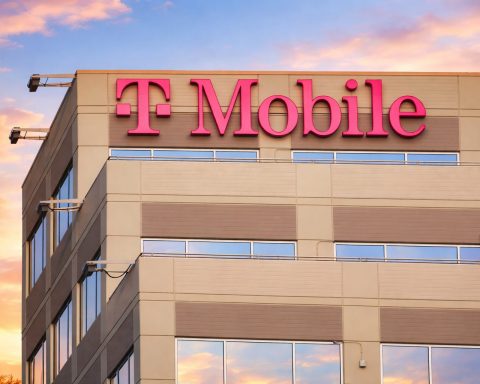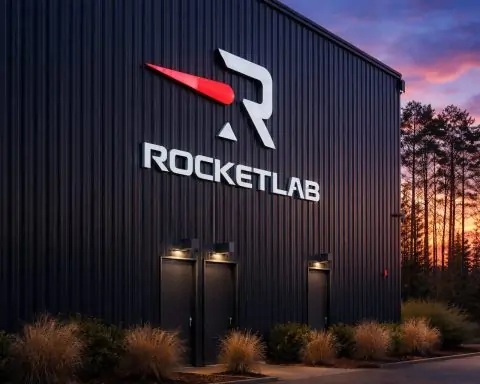- Morgan Stanley warns the AI spending frenzy may be entering its “seventh inning.” Lisa Shalett, chief investment officer of Morgan Stanley Wealth Management, told clients that the gen‑AI capital‑expenditure story has become central to both markets and the broader economy [1]. She believes the three‑year bull market driven by AI infrastructure is closer to the late innings than the first, pointing to signs of slowing free‑cash‑flow growth among hyperscalers [2].
- Hyperscaler capex has quadrupled since 2022, depleting cash reserves and halting free‑cash‑flow growth [3]. Strategas data cited by Shalett show hyperscalers’ free cash flow could shrink by 16 % over the next year. She warns that valuations come into question when free‑cash‑flow growth for richly valued companies slows [4].
- Most AI infrastructure spending is funded by “cash cow” businesses whose growth is already slowing. Shalett notes that digital advertising, search, streaming and cloud services have been funding the gen‑AI build‑out, but these segments face market saturation and rising competition [5]. She also cautions that some hyperscalers are relying on debt‑funded deals—Oracle’s pledge to build compute capacity for OpenAI is one example [6].
- Advice for investors: Morgan Stanley recommends steering clear of small‑cap and unprofitable tech stocks, becoming selective with consumer names and adding real assets and quality large caps to portfolios [7]. Shalett suggests intermediate‑duration investment‑grade bonds and international stocks as diversifiers [8].
- Bloomberg reports that AI coding is already changing how Morgan Stanley builds software. Mike Pizzi, the bank’s global head of technology and operations, said AI tools allow developers to generate code from natural‑language prompts and automate mundane tasks like debugging, a practice he called “vibe coding”. These tools boost productivity by freeing engineers to focus on complex tasks rather than replacing job.
- Other analysts see the AI capex boom continuing but caution about overbuilding. DWS Research Institute expects no slowdown in generative‑AI capex; Bloomberg estimates big tech could spend about $200 billion in 2025, with more than $90 billion of incremental spending between 2024 and 2025 dedicated to gen‑AI infrastructure [9]. Critics worry that AI models may outpace physical infrastructure, making today’s data centres obsolete [10].
- Futuriom research shows hyperscalers’ capex‑to‑revenue ratio could revert from about 22 % to the long‑term mean of 12.5 %. Analyst Scott Raynovich notes hyperscalers are set to spend roughly $350 billion on AI‑driven capital expenditure in 2025 [11]. With revenue growth slowing and trade‑war tensions rising, he believes a pullback of 20 % or more is likely [12].
- Sequoia Capital argues the AI arms race is game‑theoretic. Venture capitalist David Cahn writes that the more one believes in AI’s potential, the greater the concern that AI models will outrun physical infrastructure; big tech firms must build aggressively to avoid falling behind [13]. He adds that competition among Microsoft, Amazon and Google forces each to match the other’s spending, creating a cycle of competitive escalation [14].
Report
The Seventh Inning of the AI Capex Boom
The gen‑AI capex boom has been one of the most powerful drivers of the post‑pandemic bull market. Hyperscale cloud providers—Amazon, Microsoft, Alphabet, Meta and newer players such as CoreWeave—have poured hundreds of billions of dollars into data centres, GPUs and networking equipment to support explosive demand for generative‑AI workloads. This spending has turned AI into what one blogger called “the thing that is eating the economy,” with some analyses showing AI investment adding more to U.S. GDP than consumer spending [15].
Yet Morgan Stanley believes this party is maturing. In a note to clients, Lisa Shalett argued that the AI‑led rally is “closer to the seventh inning than the first” [16]. The central problem: hyperscalers’ free cash flow is shrinking even as capital investment accelerates. According to research firm Strategas, hyperscaler capex has quadrupled since 2022, depleting cash reserves and halting free‑cash‑flow growth [17]. Without abundant free cash flow, investors may begin to question valuations and demand stricter return‑on‑investment discipline [18]. Shalett warns that rotations into cyclical and small‑cap stocks may falter if the gen‑AI capex boom ends [19].
Shalett’s note highlights three cracks in the AI capex story. First, the funding source for AI infrastructure—digital advertising, search, streaming and cloud services—is experiencing slowing growth due to saturation and competition [20]. Second, big tech’s willingness to fund projects with debt suggests the arms race may be outpacing free‑cash‑flow generation; she points to Oracle’s plan to build compute capacity for OpenAI using borrowed money [21]. Third, she sees deal‑making behaviours such as partnerships between hyperscalers and smaller AI startups as a sign that companies are running out of natural customers and looking farther afield for demand [22]. These cracks, she argues, raise the risk that the gen‑AI capex narrative could falter, threatening the bull market [23].
How to Play the AI Investment Cycle
Given her concerns, Shalett advises investors to reduce exposure to small‑cap and unprofitable technology stocks—many of which have been swept up in the AI hype—and to focus on quality large‑cap names with strong balance sheets [24]. She suggests diversifying with real assets such as gold, real‑estate investment trusts (REITs), energy infrastructure and industrial and agricultural commodities [25]. To hedge against potential volatility, she favours intermediate‑duration investment‑grade fixed income (including municipal bonds) and encourages investors to look overseas for value [26].
Shalett is not calling the end of AI; rather, she is urging discipline. She acknowledges that fiscal and monetary stimulus could temporarily revive small‑cap and cyclical stocks [27]. However, she believes the bull market cannot survive a collapse in AI spending. By focusing on companies with durable cash flows and diversifying into real assets and quality bonds, investors may be better prepared for a scenario in which hyperscalers tighten their belts.
The Bull Case: Productivity and Game‑Theoretic Dynamics
Not everyone is pessimistic. In an interview with Bloomberg, Morgan Stanley’s global head of technology and operations Mike Pizzi said AI is having a “pretty profound impact” on the bank’s software development. He described how engineers now use natural‑language prompts to generate code, a practice his team jokingly calls “vibe coding,” and rely on AI to automate repetitive tasks like debugging. This allows engineers to devote more time to complex tasks such as code reviews. Pizzi emphasised that AI tools are boosting productivity rather than replacing jobs: “It’s letting us deliver more product,” he told Bloomberg. His comments show that within large organisations, AI investments are already delivering tangible efficiency gains.
Other analysts also argue that massive capital spending may be rational. Research from the DWS Research Institute contends that generative‑AI capex is not likely to slow near‑term; Bloomberg estimates Microsoft, Amazon, Google and other giants could increase capex to about $200 billion in 2025 [28]. More than $90 billion of incremental spending between 2024 and 2025 will be dedicated to AI infrastructure [29]. While “AI bears” worry that overbuilding sets expectations too high, some investors fear the opposite: that the progress of AI models will outpace physical infrastructure, leaving data centres obsolete [30]. The fear of missing out drives a competitive cycle in which each cloud provider must build quickly to avoid losing market share [31].
Sequoia Capital’s David Cahn frames this as a game‑theoretic arms race. In his essay “The Game Theory of AI CapEx,” he argues that the debate is not about whether AI will change the world but about how quickly to build the infrastructure [32]. If AI truly is transformative, there is a risk that models will render today’s data centres obsolete; therefore, companies might prefer to wait and adjust. However, because the cloud market is an oligopoly with intense competition, big tech firms must spend aggressively to protect their turf [33]. Each escalation by Microsoft, Amazon or Google forces the others to match it, and supply constraints (land, power, GPUs) intensify the urgency [34]. From this perspective, high capex is rational: it secures access to scarce resources, subsidises startups that build on the infrastructure and could lead to lower AI API pricing in the future [35].
Are We Near a Peak?
Independent research suggests that the hyperscaler spending boom may peak around 2025. R. Scott Raynovich of Futuriom compares today’s AI investment surge to the late‑1990s telecom bubble. His analysis shows that the top five hyperscalers plan to spend roughly $350 billion on AI‑driven capital projects in 2025 [36]. Historically, these firms spent about 12.5 % of revenue on capital expenditure, but in 2025 the capex‑to‑revenue ratio is poised to reach 22 % [37]. To revert to the long‑term mean, capex could drop by 20 % or more [38]. Raynovich notes that this high ratio coincides with slowing cloud revenue growth and mounting trade‑war tensions [39]. He believes a pullback would be rational and ultimately healthy, similar to the reset that followed the dot‑com boom [40].
Impact on the Economy and Markets
AI capex is now a major macroeconomic force. Ben Carlson of Ritholtz Wealth Management observed that Microsoft, Google, Amazon and Facebook spent $151 billion on capital expenditures in 2023, $246 billion in 2024 and are projected to exceed $320 billion in 2025 [41]. Spending by the so‑called “Mag 7” increased 40 % in 2024, while the rest of the S&P 500 saw capex rise less than 4 % [42]. Carlson notes that AI investment may currently be adding more to GDP growth than consumer spending [43]. However, he highlights the uncertainty: if these investments fail to generate returns, markets could face a significant correction [44].
Conclusion
The AI capex boom has propelled markets and spurred remarkable innovation, from natural‑language coding to state‑of‑the‑art data centres. Yet signs of maturity are emerging. Morgan Stanley’s Lisa Shalett warns of cracks in the boom as free cash flow dwindles and hyperscalers rely on slowing cash‑cow businesses [45]. Analysts at Futuriom expect the capex‑to‑revenue ratio to normalize, implying a potential pullback [46]. Others, such as Sequoia’s David Cahn and DWS, argue that a competitive arms race makes high capex rational [47] [48].
For investors, the message is mixed. AI remains a transformative technology, and productivity gains are real. However, the easy money may already be made in speculative small‑cap names. The prudent approach may be to diversify, focus on quality companies with strong cash flows and be prepared for volatility if the AI capex boom slows down. Whether the seventh inning leads to a dramatic rally or a healthy reset, the next year will be pivotal for AI investors and the broader economy.
In summary, the report argues that the generative-AI capital-expenditure boom, which has underpinned the post-pandemic bull market, is showing signs of maturity. Morgan Stanley’s Lisa Shalett warns that hyperscaler capex has quadrupled since 2022, draining cash reserves and halting free-cash-flow growth [49]. She suggests the AI-driven rally may be in the “seventh inning” and urges investors to pivot toward quality large caps, real assets, and investment-grade bonds [50]. Meanwhile, Futuriom’s analysis predicts a capex-to-revenue ratio reset, implying a possible 20 % pullback around 2025 [51].
I also note that not all observers are bearish. Sequoia Capital’s David Cahn portrays the AI capex surge as a game-theoretic arms race in which cloud giants must build aggressively to avoid falling behind [52]. DWS Research Institute sees no near-term slowdown, with big tech’s 2025 capex projected at $200 billion [53]. The report concludes that while AI investments are delivering real productivity gains, speculation in small-cap names looks risky; diversification and discipline are key as the AI capex narrative approaches a critical juncture.
References
1. www.morningstar.com, 2. www.morningstar.com, 3. www.morningstar.com, 4. www.morningstar.com, 5. www.morningstar.com, 6. www.morningstar.com, 7. www.morningstar.com, 8. www.morningstar.com, 9. www.dws.com, 10. www.dws.com, 11. www.forbes.com, 12. www.forbes.com, 13. www.sequoiacap.com, 14. www.sequoiacap.com, 15. awealthofcommonsense.com, 16. www.morningstar.com, 17. www.morningstar.com, 18. www.morningstar.com, 19. www.morningstar.com, 20. www.morningstar.com, 21. www.morningstar.com, 22. www.morningstar.com, 23. www.morningstar.com, 24. www.morningstar.com, 25. www.morningstar.com, 26. www.morningstar.com, 27. www.morningstar.com, 28. www.dws.com, 29. www.dws.com, 30. www.dws.com, 31. www.dws.com, 32. www.sequoiacap.com, 33. www.sequoiacap.com, 34. www.sequoiacap.com, 35. www.sequoiacap.com, 36. www.forbes.com, 37. www.forbes.com, 38. www.forbes.com, 39. www.forbes.com, 40. www.forbes.com, 41. awealthofcommonsense.com, 42. awealthofcommonsense.com, 43. awealthofcommonsense.com, 44. awealthofcommonsense.com, 45. www.morningstar.com, 46. www.forbes.com, 47. www.sequoiacap.com, 48. www.dws.com, 49. www.morningstar.com, 50. www.morningstar.com, 51. www.forbes.com, 52. www.sequoiacap.com, 53. www.dws.com










